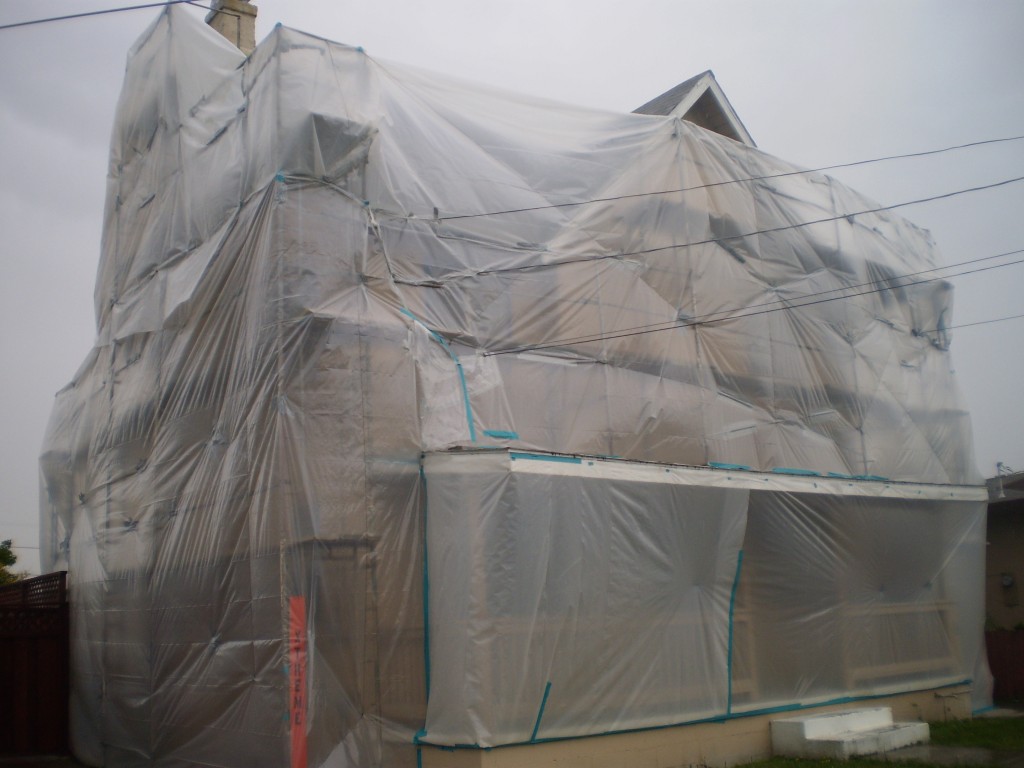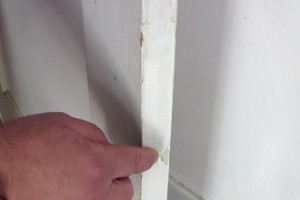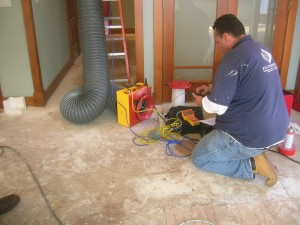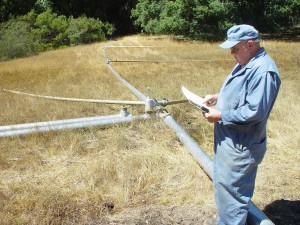
Make sure you know how to spot hidden dangers lurking in your home. Photo: Environmental Remedies, Inc. (2015)
If you’re like most people, you think of your home as your sanctuary—a refuge from the uncertainties of the outside world. However, you may not realize just how many dangers can be present within its very walls. Hazardous substances like mold, lead and asbestos are present in many United States homes, often without the homeowners’ awareness. Since the only way to identify these threats is with professional inspection, you should consider having the following tests performed in your home:
1. Mold testing
When mold develops inside a home, it’s typically due to an excess of moisture, whether from a slow leak, poor ventilation or as a secondary effect of catastrophic water damage. While ongoing exposure to mold commonly causes allergic reactions and respiratory problems, in the case of toxic strains like Stachybotrys (aka black mold), the symptoms can be far more serious. Even when it’s not a health concern, mold that’s left untreated frequently results in costly structural damage.
While mold can often be identified visually or by its characteristic musty odor, in some instances it’s able to escape detection, particularly in hidden areas like beneath carpet or within walls. So, to get complete confirmation that your home is mold-free, it’s a good idea to have a professional inspection performed. A mold inspector will gather air samples and send them to a lab, which will subsequently report its findings.

In homes built prior to 1978, any cracking, flaking or peeling paint may represent a lead hazard. Photo: American Ratings Corporation (2015)
2. Lead testing
Lead is a highly poisonous metal that was a standard ingredient in house paint for many years. The U.S. government passed legislation restricting its usage in 1978, but many homes built prior to this date still contain unsafe levels of lead. Because of lead’s high toxicity, it can result in major health problems when ingested by humans, including brain disorders and nervous system damage.
To safeguard the health and safety of your family, it’s important to have your home professionally tested for lead paint hazards. Testing generally begins with a visual inspection of the home’s paint, followed by the use of special equipment to examine what can’t be detected visually. Afterward, samples of house paint are gathered and sent to a lab for further testing.

The only way to identify asbestos is via proper sampling and testing performed by a qualified company. Photo: P.W. Stephens Environmental, Inc. (2015)
3. Asbestos testing
Because of its fire-retardant properties, asbestos became widely used as a building material in the mid-1800s. Following the discovery of a link between prolonged inhalation of asbestos and potential health problems (now known to include lung cancer, mesothelioma and asbestosis), its usage declined rapidly. Nonetheless, asbestos continued to be used in manufacturing through the 1980s, which is why it’s commonly found in materials like old popcorn ceilings, roofing shingles, ducting insulation and floor tiles. The only way to be certain whether a material contains asbestos is via proper sampling and testing through a qualified company.
4. Radon testing
A tasteless, odorless gas produced by uranium decomposition in rock, soil and water, radon is regarded as a leading cause of lung cancer today. Normally, radon that disseminates into the air from the ground isn’t a threat because it quickly becomes diluted, but when it enters a home, it often remains trapped, particularly during winter when doors and windows are kept closed.
Because of its pervasiveness—it’s estimated that one in every 15 homes contains elevated radon levels—the Environmental Protection Agency (EPA) recommends radon testing in all U.S. homes. While testing for radon is quite simple, your best bet is to hire a qualified company to perform it.

To rule out the presence of waterborne contaminants, have your well water periodically assessed by a water treatment specialist. Photo: Weeks Drilling & Pump Company (2015)
5. Well water testing
If your water is supplied by a well, periodic testing is crucial to verify cleanliness and identify any harmful contaminants. Common water contaminants include arsenic, which can cause skin damage and circulatory system problems; coliform bacteria, which can lead to the contraction of pathogenic disease; and nitrate, which can cause serious illness in infants. To rule out the presence of these and other contaminants, contact a local water treatment specialist to have your well water professionally assessed.
To find a Diamond Certified company that can help you with testing for one or more of these areas, click on one of the links below:
Alameda County: Asbestos Removal, Lead Inspection, Water Treatment
Contra Costa County: Asbestos Removal, Mold Inspection
Marin County: Water Well & Pump
San Francisco: Asbestos Removal
Santa Clara County: Asbestos Removal
Sonoma County: Water Treatment, Water Well & Pump
3 Responses
Leave a Reply
You must be logged in to post a comment.

The information for asbestos testing reminded me that I should have that done for a home that I want to buy. It’s pretty old and empty for a while, so I’m not sure if it’s been removed from the house yet. You mentioned that asbestos is commonly found in popcorn ceilings, roofing shingles, ducting insulation, and floor tiles. The house that I’m buying has popcorn ceilings, so I should have that checked out, along with the tiles, shingles, and insulation in case any asbestos is found.
I didn’t realize that asbestos was still used as a building material through the 1980s. Knowing that, however, would make it much more important to me to have any home tested for asbestos if it was built earlier than the 90’s. I would imagine that a professional asbestos company would be able to inspect for it and remove it safely if it was found.
Getting proper sampling and testing through a qualified company is a great idea. Making sure that your home is safe for you and your family to live in would be important. I would imagine that if you have been exposed to asbestos materials you’ll want to make sure to get rid of it as soon as possible and get testing done to ensure that you are safe.